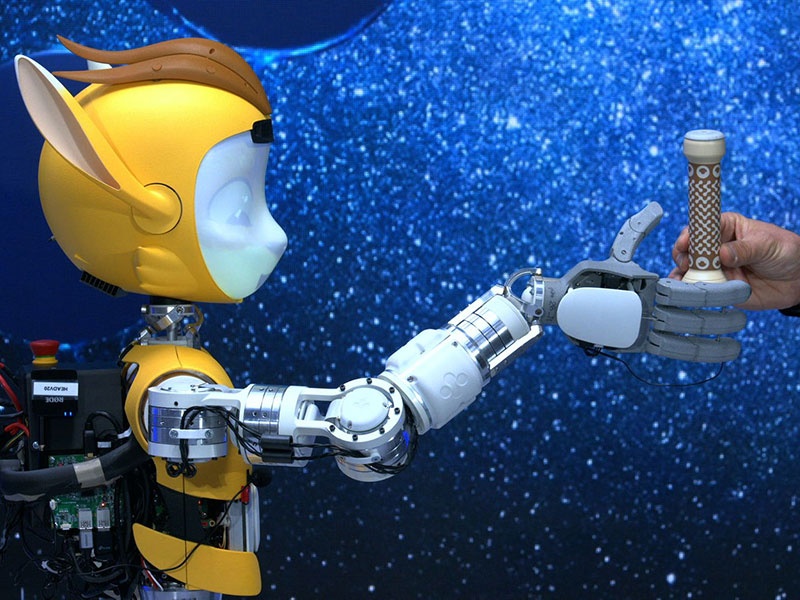Humanoid robots tried out.
c't 3003 went to the "Humanoids" robot fair in Nancy and took a close look at two-legged apparatuses.
Hello my dears, I found an exciting report for you in which some companies appear that are active or invested in this field. Something like $9434 (+0,51%) . $TSLA (+1,41%)
$HYUD
You are welcome to name other players in the comments. And whether you already see potential here or whether it could still take years, as I can read from the report here.
There was a big discussion the other day at the presentation of Tesla's Optimus robots or videos like this one with the X1 Neo. It all looks nice and futuristic, but I'll say diplomatically - and hopefully not judicially - that I personally won't believe that it works like in all the PR videos until I've seen it with my own eyes.
Is there a lot of fakery and PR involved with Tesla - what's your opinion?
Yes, and unfortunately walking on two legs is extremely difficult for robots. Which is why the robot that looked the most practical wasn't walking on two legs, but on a ball.
We're talking about the Mirokaï - plural, because one is called Miroki and the other is called Miroka - from Enchanted Tools. This is a French company. They have made the rather rapid announcement that they want to produce 100,000 of these things by 2032. The target price is 30,000 euros. The early access program is due to start next year.
But unfortunately, the Mirokaï are not yet helping in the household or, let's say, in logistics, but are supposed to make things a bit more human in hospitals and retirement homes, for example. Yes, yes, I can see the contradiction. Or just interact a bit with customers in airports, restaurants and hotels and show them the way.
That all sounds very ambitious, but the founder of Enchanted Tools co-developed the robots Pepper and Now from Aldebaran - now Softbank - a long time ago. And in fact, these are the robots that I personally have seen most often in the wild. Even the Hanover City Library has a Pepper. So, the makers of Mirokaï definitely know their way around robots that interact directly with people. That's why it could actually work.
But the truth is that it's all still in, let's say, a discovery phase. There are test projects with humanoid robots, for example at Amazon with Digit from Agility Robotics and at BMW with Figur from Figur AI, both US companies.
Then there is also Optimus from Tesla and, of course, the retreaded Atlas from Boston Dynamics. But unfortunately none of the four were on show in Nancy or at any other trade fair I've been to so far. So I have to rely on PR videos.
Well, now back to Unitree. So the G1, I was actually able to play around with it, and I also tried to push it a bit. And it actually seems very stable. However, it's only 1.30 meters high, which is about the height of a primary school child. Its successor, the H1, is already 1.80 meters tall, but is also said to cost 90,000 US dollars. It was also on the stand, but was unfortunately never shown in action.
Unfortunately, this was often the case with Fourier robots, for example. There were also brochures that looked as if they were finished products, but even after asking several times, I wasn't allowed to see any of these robots in action.
The only demonstration was here [hand moves]. Yes, nothing more really.
Conclusion
So, I think you've noticed by now: it's really difficult to distinguish technical progress from hot air in this industry.
Are we on the verge of a robot revolution? Or are they actually something like remote-controlled cars with a slightly more complicated mode of locomotion - something that has been around for decades?
In any case, what I took away from Humanoids 2024 in Nancy: While such real, large, humanoid robots were only developed and built for research purposes for many years - by the DLR in Germany, by the IIT in Italy - humanoid robots are now very slowly materializing as products.
In other words, devices that can be bought. And of course, for the time being, they are only being bought by companies and institutions that want to experiment with them and conduct research.
But in any case, they are no longer one-offs costing millions, but products.
And the biggest surprise for me was the price of 16,000 euros for the Unitree G1, a real human robot.
That's only as much as eight fully equipped iPhones cost. I'm therefore cautiously optimistic that I might live to see a humanoid robot move into my home to do my laundry, perhaps chop my onions for me and beat me at chess.
So as I said: cautiously optimistic.
And what I definitely noticed very clearly at Humanoids in Nancy: How great I actually think robots are, on such a non-rational, emotional level.
Of course, I don't know how humanoid robots will affect humanity in concrete terms at some point. Maybe that's a really bad idea.
But just on an emotional level: am I somehow weird or something? Am I the only one? Or do you feel the same way?
Feel free to write in the comments.
https://www.heise.de/news/Humanoide-Roboter-ausprobiert-10183284.html

